The Sihoo Doro S300 arrives with a promise of high-end comfort and a sleek design, but it starts its journey in your home with an assembly process that might test your patience. Unlike premium chairs like the Aeron or Leap, which require no assembly, the S300 falls closer to the budget-friendly end of the spectrum in this regard. Here’s what I found during the setup.
Full Disclaimer: We are an office furniture dealer and sell some of the products we review. To learn more about the products we sell, our review process and why you can trust us, please visit: Why we’re different. Who is BTOD.com and The Learning Center?
Sihoo Doro S300 Chair Links
- Unboxing and Assembly
- First Impressions and Adjustments
- Anti-Gravity Comfort
- Dynamic Support
- Armrest Innovations and Concerns
- Recline Function: Nearly There
- Aesthetic and Material Choices
1. Unboxing and Assembly
To begin, the packaging says a lot about a product. I found some chair parts were loosely placed in the box but were sufficient enough because there was no damage to the actual chair. I did appreciate that. You will need to assemble the base and attach the arms to the seat frame which wasn’t the easiest process.
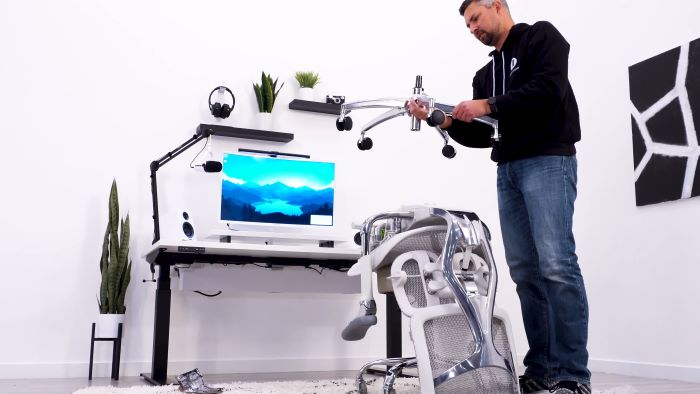
They did include spare bolts which was great because I came across a bolt that wouldn’t fit correctly without cross threading. While assembling the chair, I did find that placing the seat on a box or stool will make putting the chair together easier.
2. First Impressions and Adjustments
Now that the chair was together, it was time for the ultimate sit test. It was quite interesting. The upright position of the backrest was a pleasant surprise. It’s common for chairs to not support a straight sitting posture, but the S300 excels in this area. As far as the arm pads, they were initially uncomfortable by the elbow area but ended up being a strength. I will touch on this more later in the article.
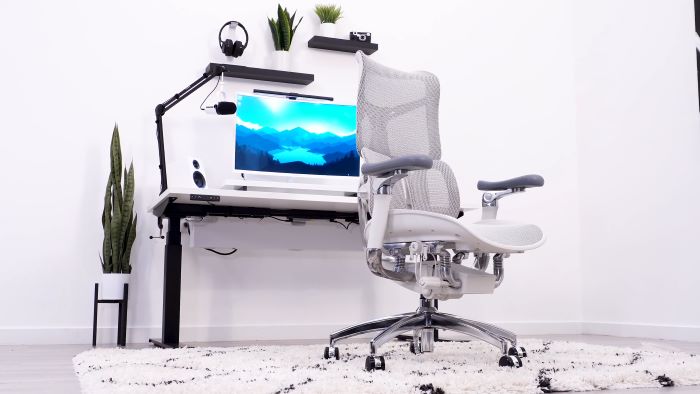
Adjustability is important for a chair intended for long hours of use. At my height of 6’2″, I often struggle with chairs that offer limited seat depth. While the S300 could use a bit more in this area, it still manages to provide a decent range of adjustment. The chair offers a wide range of adjustments that should accommodate users in the 80th percentile of body sizes, which is impressive.
3. Anti-Gravity Comfort
The term “anti-gravity” is often used to describe a seating experience where you can barely feel the chair beneath you. Here’s my take on whether the S300 lives up to this claim. I found the shock absorbing system to be useful. It is designed to absorb shocks and relieve pressure. However, at my weight of about 200 lbs., the springs seemed fully compressed, which made it hard to evaluate their effectiveness immediately.
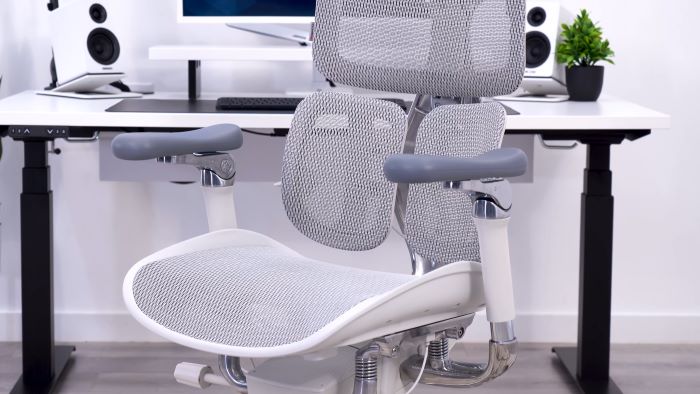
The seat design strikes a similar concept to the Herman Miller Aeron, particularly with its curved hard edges and waterfall front edge. The mesh design and absence of a front pad contribute to a unique sitting experience that avoids the common issue of mesh bunching up. I personally like that because you won’t see it in most chairs.
4. Dynamic Support
The S300’s design incorporates various features aimed at enhancing comfort and support dynamically as you move. The lower back support is adjustable via a gas lift, allowing for a precise level of lumbar support. I was happy with how much support I was getting. Although the highest setting was too much. It would push me too far forward, causing my upper back to lose contact with the backrest.
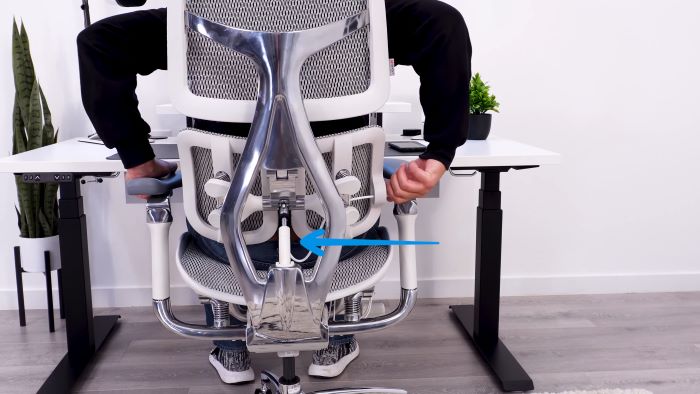
The backrest felt flexible as the springs behind the lumbar pads adjusted to movements. The upper backrest lacks this flexibility unfortunately which might limit overall back support for some users. Depending on your height, you may be able to use the backrest as a headrest. For me that didn’t quite work.
5. Armrest Innovations and Concerns
The armrests as I mentioned above deserve an explanation. Although they were initially uncomfortable, they actually became less of an issue as the chair was used at a desk. The arms naturally rested forward of that ridge.

This also helped when I was mobile gaming, the arms were positioned upward and my arms wouldn’t slide off. There are extensive adjustments including a wide range of pivot adjustments, but the looseness of the arm pad pivot will need further testing to determine if it poses a long-term issue.
6. Recline Function: Nearly There
One of the most talked about features is its recline functionality which promises a smooth and adjustable reclining experience. For my height and weight, the recline tension was adequate but not perfect. It allowed for a comfortable recline, but the tension wasn’t strong enough to prevent me from reclining all the way back if I pushed too hard.
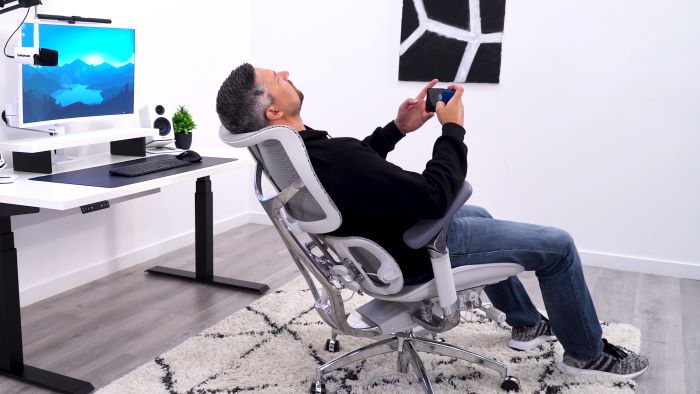
The synchro tilt mechanism provides a suspended feeling that is quite pleasant, though it doesn’t quite reach the level of the Aeron’s recline capability. Considering the price point of $900, I think it offers the best recline in this range.
7. Aesthetic and Material Choices
The Sihoo Doro S300 not only aims to provide comfort, but also focuses on the visual and material quality. With this chair, there are two color schemes: chrome with white or chrome with black. I prefer the chrome paired with the white for a more standout look.
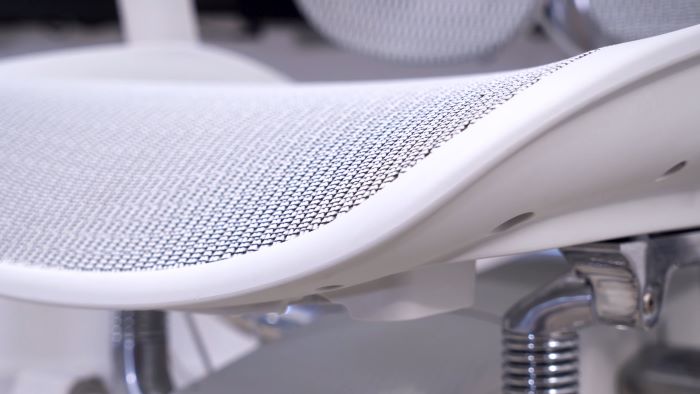
The materials themselves are a mix of high-end plastics and metal parts which is typical for its price range. The mesh is a blend of Italian velvet and Dupont DP, which provides a soft touch and good elasticity.
Bottom Line
While I can’t provide a final verdict based on a first impression alone, the Sihoo Doro S300 shows promise. At a retail price of around $900, the chair is positioned as a mid-range option in the market of ergonomic office chairs. I am looking forward to the 60-day test to see how the chair holds up over time, especially considering the initial impressions and the features it offers.




